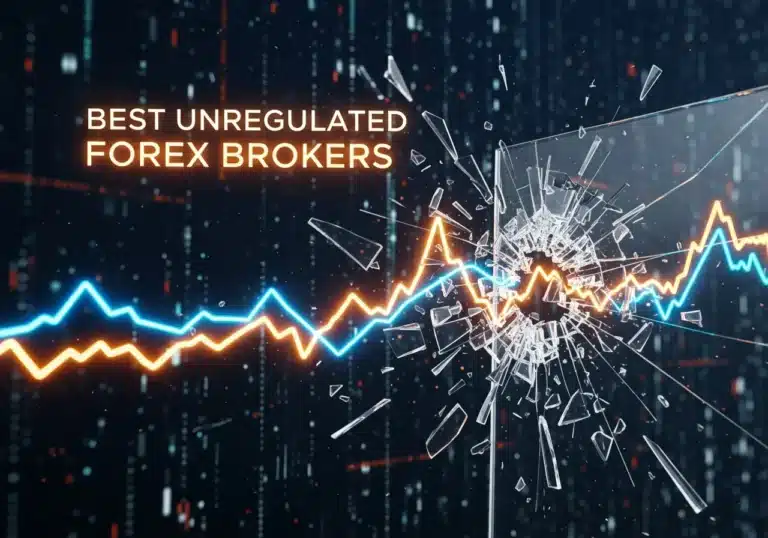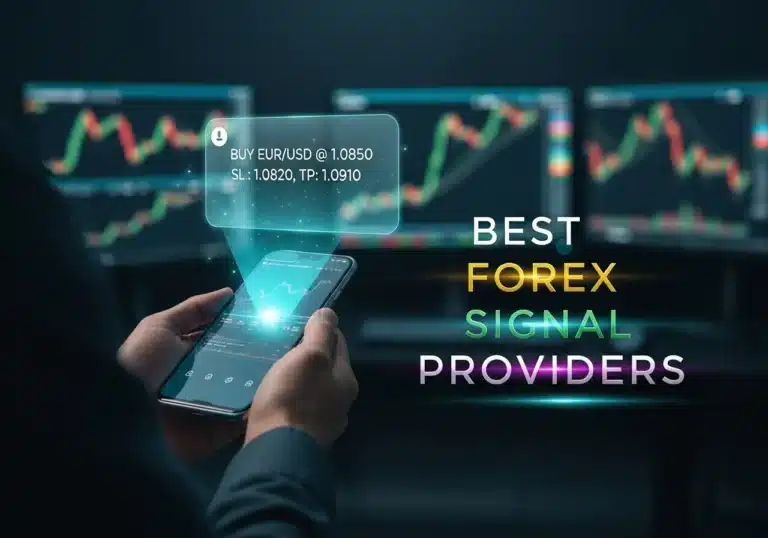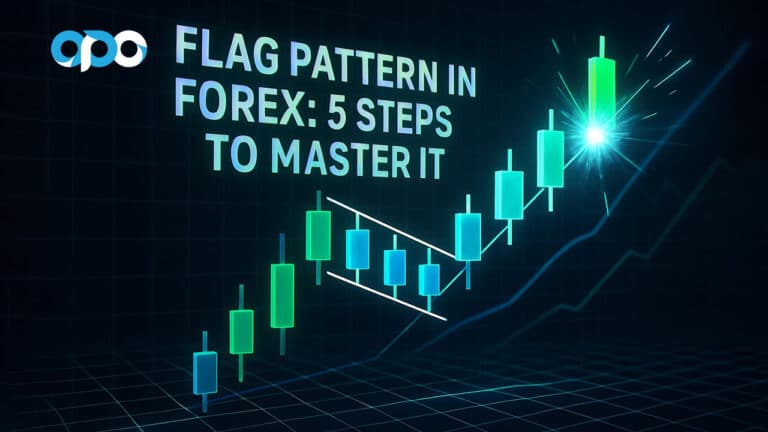Feeling overwhelmed by the complexities of the financial markets? Many aspiring traders lack the time to research constantly or the expertise to navigate volatile markets effectively, leading to missed opportunities and potential losses. Watching potential profits slip away or making costly mistakes due to inexperience is frustrating and demotivating. Imagine leveraging the skills of seasoned professionals or proven trading systems automatically.
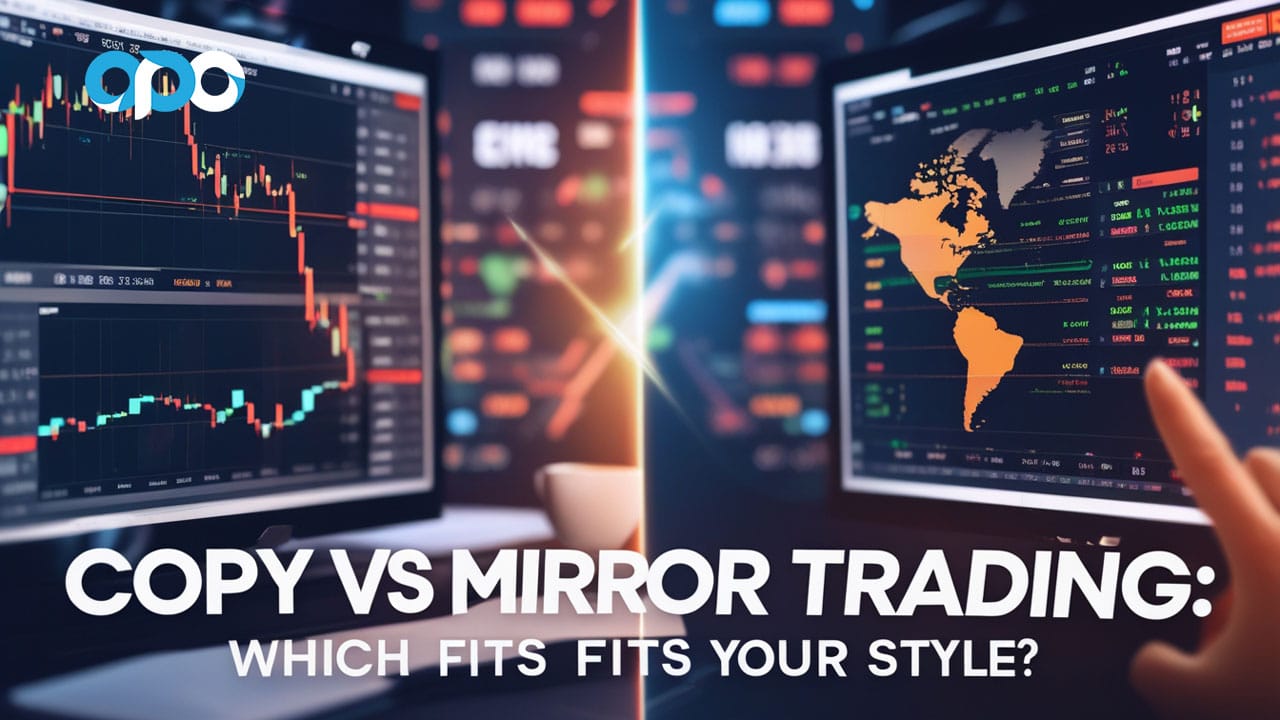
This is where automated trading solutions come in, but navigating the options can be confusing. The core difference lies in what you replicate: copy trading involves duplicating the individual trades of a chosen trader, while mirror trading focuses on replicating an entire trading strategy, often algorithmic. This article will delve deep into the nuances of copy trading vs mirror trading, helping you understand which approach might better suit your goals, especially when working with a regulated forex broker.
Understanding the Basics: What is Copy Trading?
Copy trading has surged in popularity, largely due to its accessibility and the inherent appeal of learning from or directly benefiting from the actions of experienced traders. At its heart, copy trading is a portfolio management service that allows traders to automatically copy the positions opened and managed by another selected trader.
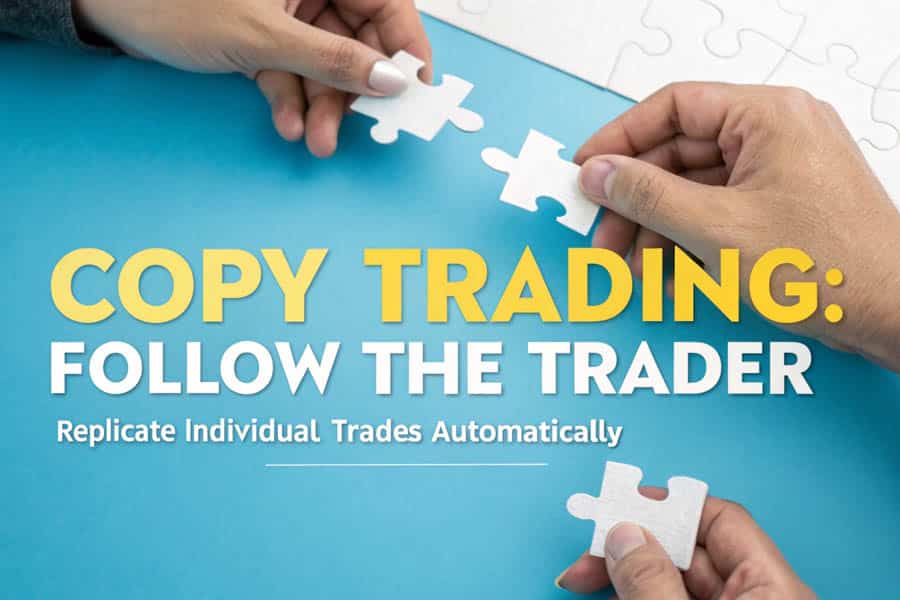
Think of it like having a seasoned trader execute trades on your behalf, but within your own account. You, the copier, allocate a certain amount of capital to follow a specific trader (often called a strategy provider or signal provider). When that trader executes a trade (buy or sell), the exact same trade is automatically replicated in your account, proportionally adjusted to the capital you’ve allocated.
How it Works:
- Platform Selection: You typically need an account with a broker for forex trading that offers a copy trading platform or integrates with third-party copy trading services.
- Trader Selection: The platform provides a list of traders you can copy, usually accompanied by performance statistics, risk scores, trading history, and follower counts. Due diligence here is crucial.
- Capital Allocation: You decide how much of your capital you want to allocate to copying a specific trader.
- Automatic Replication: Once linked, the platform automatically mirrors the chosen trader’s actions in real-time (or near real-time) in your account. This includes opening positions, setting stop-loss and take-profit orders, and closing positions.
- Monitoring and Control: While automated, you usually retain the ability to manually close copied trades, stop copying a trader altogether, or adjust your capital allocation.
Key Characteristics:
- Trader-Centric: The focus is on the individual trader’s skill, decisions, and performance.
- Granular Replication: Individual trades are copied, providing transparency into specific entry and exit points.
- Social Element: Many platforms incorporate social features, allowing interaction between copiers and traders.
Pros of Copy Trading:
- Accessibility: Lowers the barrier to entry for novice traders.
- Learning Opportunity: Allows beginners to observe the strategies and decisions of experienced traders in real-time.
- Time-Saving: Eliminates the need for constant market analysis and trade execution.
- Diversification: Enables diversification by copying multiple traders with different styles or market focuses.
- Potential for Passive Income: If successful traders are chosen, it can generate returns with less active involvement.
Cons of Copy Trading:
- Dependence on Trader Skill: Your results are directly tied to the performance of the trader you copy. A losing streak for them means a losing streak for you.
- Slippage: Differences in execution price between the trader’s account and yours can occur, especially in fast-moving markets.
- No Guarantees: Past performance is not indicative of future results. Even top traders can have losing periods.
- Emotional Influence: It can be tempting to jump between traders based on short-term performance (performance chasing).
- Fees: Platforms or traders might charge subscription fees, performance fees, or wider spreads.
Understanding these fundamentals is the first step in appreciating the distinction in the copy trading vs mirror trading debate. Copy trading offers a direct link to a trader’s actions.
Read More: What is Copy Trading in Forex
Understanding the Basics: What is Mirror Trading?
Mirror trading predates copy trading and operates on a slightly different principle. Instead of following an individual trader’s every move, mirror trading involves selecting and automatically replicating a specific trading strategy. These strategies are often, though not always, algorithmic or system-based, developed through extensive backtesting and analysis.
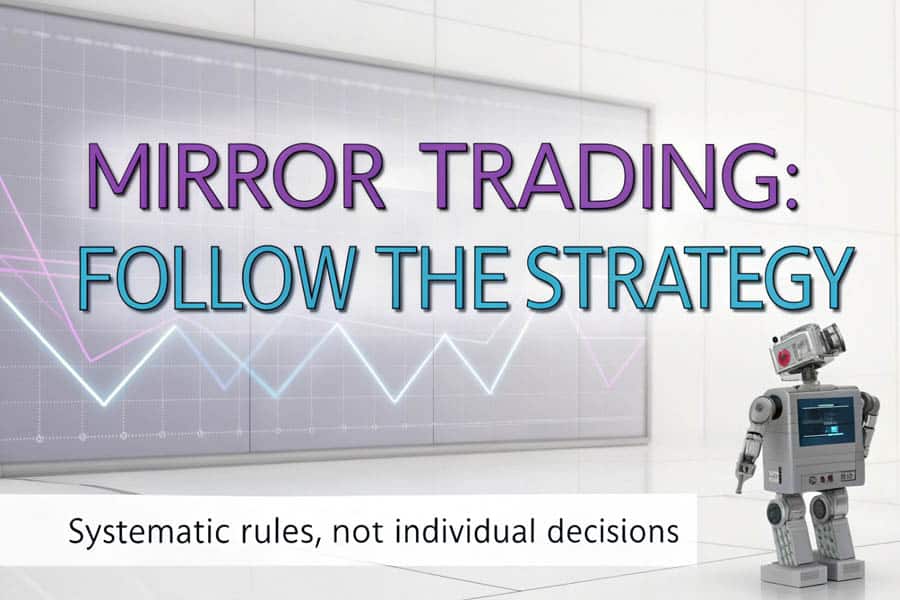
Think of it as adopting a pre-defined rule set for trading. You choose a strategy based on its historical performance, risk parameters, and underlying logic. Your forex trading broker’s platform then automatically executes trades based on the signals generated by that chosen strategy. The focus shifts from the person making the trades to the system generating the signals.
How it Works:
- Platform Access: Similar to copy trading, you need a broker offering mirror trading capabilities or access to a platform specializing in strategy hosting.
- Strategy Selection: You browse a library of available trading strategies. These are typically presented with detailed performance metrics, backtesting results, drawdown statistics, asset classes traded, and strategy descriptions.
- Account Linking & Allocation: You link your trading account and allocate capital to the chosen strategy.
- Automated Execution: The platform monitors the market for signals generated by the selected strategy’s algorithm or rules. When a signal occurs (e.g., buy EUR/USD based on specific indicator confluence), the platform executes the corresponding trade in your account automatically.
- System-Driven Management: Trades are typically managed (stop-losses, take-profits) according to the strategy’s pre-defined rules.
Key Characteristics:
- Strategy-Centric: The core focus is on the performance and logic of the trading system or algorithm.
- Systematic Execution: Trades are generated based on pre-set rules and conditions, reducing human emotional intervention during execution.
- Often Algorithmic: Many mirror trading strategies are based on automated trading systems (Expert Advisors or EAs in MT4/MT5 terminology).
Pros of Mirror Trading:
- Strategy Diversification: Allows access to a variety of tested trading strategies across different markets and timeframes.
- Reduced Emotional Trading: Since execution is based on pre-defined rules, it removes the emotional decision-making often associated with manual trading.
- Backtested Performance: Strategies often come with historical backtesting data, providing some insight into potential past performance (though not a guarantee of future results).
- Potential for Consistency: Well-designed strategies aim for consistent application of rules, which can lead to more predictable performance patterns (though not necessarily guaranteed profits).
- Time Efficiency: Like copy trading, it automates the trading process.
Cons of Mirror Trading:
- Less Transparency (Sometimes): Depending on the platform, you might see the strategy’s overall performance but not always the intricate details or real-time reasoning behind every single trade signal.
- Strategy Failure Risk: Strategies can stop working if market conditions change significantly from those they were designed or tested for (‘curve-fitting’ risk).
- Potential Inflexibility: Automated strategies may not adapt well to sudden, unforeseen market events or news releases unless programmed to do so.
- Requires Understanding: Evaluating strategy metrics (drawdown, Sharpe ratio, etc.) requires a degree of understanding.
- Costs: Fees might involve subscriptions, performance cuts, or specific broker conditions.
Mirror trading offers a more system-based approach compared to the person-centric nature of copy trading. This difference is central to the copy trading vs mirror trading comparison.
Copy Trading vs Mirror Trading: A Head-to-Head Comparison
While both copy trading and mirror trading offer automated ways to participate in the financial markets by leveraging external expertise or systems, their core mechanisms and implications differ significantly. Understanding these differences is key to choosing the approach that aligns best with your trading personality, risk tolerance, and objectives. Let’s break down the copy trading vs mirror trading matchup across several critical factors:
Control and Flexibility in Copy Trading vs Mirror Trading
- Copy Trading: Generally offers more granular control. You choose which specific traders to follow. You can often see their open trades in real-time and decide to manually close a copied trade if you disagree with it (though this can defeat the purpose). You can easily allocate different amounts to different traders and stop copying someone instantly. The control lies in selecting and deselecting people.
- Mirror Trading: Control is typically exercised at the strategy selection level. Once you choose a strategy, you are essentially handing over execution decisions to its pre-defined rules or algorithm. While you can stop mirroring the strategy altogether, intervening in individual trades generated by the system is often not possible or discouraged, as it interferes with the strategy’s logic. The control lies in selecting and deselecting systems.
Verdict: Copy trading offers more direct, real-time control over individual positions derived from a human trader, while mirror trading offers control primarily at the higher level of strategy selection.
Transparency: Seeing Inside the Trades
- Copy Trading: Usually provides high transparency. You can see the individual trades being executed by the copied trader, including entry price, exit price, stop-loss, and take-profit levels. This allows for learning and understanding the trader’s style.
- Mirror Trading: Transparency can vary. While performance metrics and strategy descriptions are provided, the underlying logic of an algorithmic strategy might be a “black box.” You’ll see the trades executed in your account, but the specific combination of indicators or rules triggering the trade might not always be fully disclosed to protect the strategy’s intellectual property. You see the what (the trade) but not always the detailed why (the precise signal logic).
Verdict: Copy trading generally offers greater transparency into the decision-making process (human judgment) behind individual trades compared to the often system-based, sometimes proprietary, logic in mirror trading. This is a key point in the copy trading vs mirror trading analysis.
Execution Method and Underlying Logic
- Copy Trading: Execution directly mimics the actions of a human trader. The logic is based on that trader’s analysis, intuition, strategy, and potentially, emotional responses. Execution relies on the platform quickly replicating the provider’s trade in the copier’s account.
- Mirror Trading: Execution is triggered by signals generated from a pre-defined strategy, which is often algorithmic. The logic is systematic, based on technical indicators, price patterns, or other quantitative factors programmed into the system. Execution follows the strategy’s rules automatically.
Verdict: Copy trading replicates human decisions; mirror trading replicates system rules. The copy trading vs mirror trading distinction here lies in human vs. machine-driven logic at the point of execution.
Risk Management Approaches
- Copy Trading: Risk management relies heavily on the copied trader’s own risk management practices (stop-loss usage, position sizing). Additionally, the copier typically has platform-level controls to set overall stop-losses for the copied portfolio or limit the capital allocated per trader. The primary risk is the trader’s performance and discipline.
- Mirror Trading: Risk management is usually built into the strategy’s parameters (e.g., pre-defined stop-loss rules, maximum position size, conditions for exiting trades). The copier relies on the strategy’s inherent risk controls. The primary risk is that the strategy itself may underperform or fail in current market conditions.
Verdict: Both require risk management, but in copy trading, you trust the trader’s risk management plus your own overview settings. In mirror trading, you trust the strategy’s embedded risk rules. Assessing the risk profile is crucial when considering copy trading vs mirror trading.
Read More: Social Trading vs Copy Trading
Trader/Strategy Selection Criteria
- Copy Trading: Selection focuses on evaluating the trader. Key metrics include historical return, risk score, maximum drawdown, number of copiers, trading frequency, duration of track record, and qualitative aspects like trading style description and communication.
- Mirror Trading: Selection focuses on evaluating the strategy. Key metrics include backtested and live performance, Sharpe ratio (risk-adjusted return), maximum drawdown, profit factor, average trade duration, win rate, and the underlying logic or market thesis (if disclosed).
Verdict: The due diligence process differs significantly. Copy trading involves assessing human skill and consistency; mirror trading involves assessing system robustness and applicability. This selection process is a fundamental aspect of the copy trading vs mirror trading choice.
Suitability: Who Benefits Most from Copy Trading vs Mirror Trading?
- Copy Trading:
- Beginners looking to learn by observing experienced traders.
- Individuals who prefer a connection to a human trader.
- Those seeking diversification across different human trading styles.
- Traders comfortable with the risk associated with individual trader performance.
- Mirror Trading:
- Traders who prefer a systematic, rule-based approach.
- Individuals comfortable relying on algorithms and backtested data.
- Those seeking diversification across different automated strategies.
- Traders who want to minimize emotional decision-making in execution.
Verdict: The best fit in the copy trading vs mirror trading equation depends heavily on individual preferences for human interaction vs. system reliance, transparency needs, and how one prefers to manage risk.
| Factor | Copy Trading | Mirror Trading |
| Control and Flexibility | More granular control. Can choose specific traders, see open trades, and manually close positions. | Control at strategy selection level. Limited intervention in individual trades. |
| Transparency | High transparency. Can see individual trades, entry/exit prices, stop-loss, and take-profit levels. | Varies. Performance metrics visible, but underlying logic may be a “black box”. |
| Execution Method | Mimics actions of human trader. Based on trader’s analysis, intuition, and strategy. | Triggered by signals from pre-defined, often algorithmic strategy. |
| Underlying Logic | Human judgment and decision-making. | Systematic, rule-based, often algorithmic. |
| Risk Management | Relies on copied trader’s practices and platform-level controls. | Built into strategy parameters. Relies on strategy’s inherent risk controls. |
| Selection Criteria | Focus on evaluating the trader (historical return, risk score, drawdown, etc.). | Focus on evaluating the strategy (backtested performance, Sharpe ratio, profit factor, etc.). |
| Suitability | Beginners, those preferring human connection, seeking diverse trading styles. | Those preferring systematic approaches, comfortable with algorithms and backtested data. |
The Role of the Forex Broker in Copy and Mirror Trading
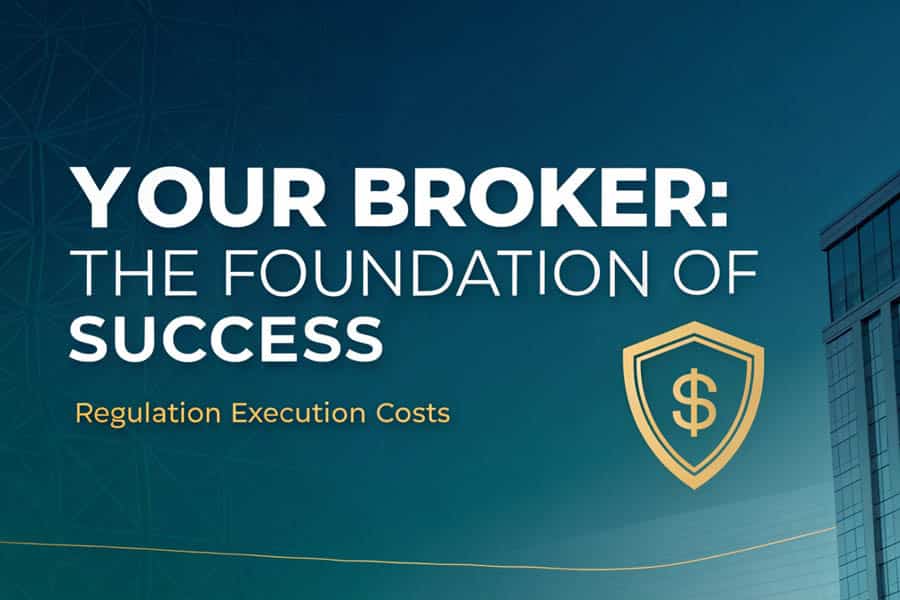
Choosing the right forex broker is not just important; it’s fundamental to your success with either copy trading or mirror trading. The broker provides the infrastructure, execution environment, and often the platform where these activities take place. Here’s why your choice of broker matters significantly:
- Platform Integration and Availability: Not all brokers offer built-in copy or mirror trading features. Some specialize in it, offering proprietary platforms (like OpoFinance’s social trading features), while others integrate with popular third-party platforms like MetaTrader (MT4/MT5) signals, Myfxbook Autotrade, or ZuluTrade. Ensure the broker for forex you choose supports the specific type of trading (copy or mirror) and the platform you intend to use.
- Execution Speed and Quality: The effectiveness of both copy and mirror trading hinges on timely and accurate trade execution. Slippage – the difference between the expected trade price and the actual execution price – can significantly erode profits. A broker with robust server infrastructure, deep liquidity pools, and fast execution speeds is crucial to minimize slippage, especially when copying frequent traders or using strategies sensitive to entry points. This is a vital consideration when comparing copy trading vs mirror trading providers.
- Regulation and Security: Entrusting your capital to automated strategies requires a high degree of trust in your broker. Opting for a regulated forex broker, overseen by reputable authorities (like ASIC, CySEC, FCA), provides a layer of security, ensuring adherence to strict financial standards, segregation of client funds, and dispute resolution mechanisms. Never compromise on regulation.
- Costs and Fees: Understand the cost structure. This can include:
- Spreads: The difference between bid and ask prices. Tighter spreads are generally better.
- Commissions: Some account types charge a per-trade commission.
- Platform Fees: Some brokers or third-party platforms charge subscription fees for access to copy/mirror trading services.
- Performance Fees: Strategy providers (in mirror trading) or copied traders (in copy trading) might charge a percentage of the profits generated.
- Swap Fees: Charges for holding positions overnight.
An online forex broker should be transparent about all associated costs.
- Asset Availability: Ensure the broker offers the range of instruments (forex pairs, indices, commodities, cryptocurrencies) traded by the strategies or traders you wish to follow. Limited asset availability can restrict your choices.
- Account Types and Leverage: Different brokers offer various account types (Standard, ECN, Pro) with varying spreads, commissions, and minimum deposits. Understand the leverage offered and how it impacts the risk of copied or mirrored trades. High leverage can amplify both gains and losses.
- Customer Support: Reliable customer support is essential, especially if technical issues arise with the platform or trade execution.
In essence, your broker for forex trading acts as the gateway and facilitator for your copy or mirror trading activities. A poor choice can undermine even the best trader or strategy through high costs, poor execution, or lack of security. Thoroughly researching and selecting a reputable, well-regulated broker with suitable technology is a non-negotiable first step before engaging in copy trading vs mirror trading.
Read More: Understanding Copy Trading on Opofinance
Deep Dive: Nuances in Copy Trading vs Mirror Trading
Beyond the core distinctions, several subtle factors and operational realities differentiate the experience and potential outcomes of copy trading vs mirror trading.

- Slippage Impact: While slippage affects both, its source and impact can differ. In copy trading, slippage often arises from the slight delay between the provider’s trade execution and its replication across potentially hundreds or thousands of copier accounts. High-frequency traders are particularly susceptible. In mirror trading using algorithms hosted directly on the broker’s server (VPS), execution latency might be lower, but slippage can still occur based on the strategy’s order type (market vs. limit) and the market’s liquidity when the signal triggers.
- Latency: Related to slippage, latency (delay) is critical. Copy trading relies on communication between the provider’s platform, the copy trading hub, and the copier’s platform. Mirror trading, especially if the strategy runs on a server co-located with the broker’s execution engine, might have a latency advantage for certain types of strategies.
- Psychological Factors: Copy trading involves trust in a person. This can lead to emotional reactions – euphoria when the trader wins, frustration or panic when they lose. It’s easier to question a person’s judgment during a drawdown. Mirror trading involves trust in a system. While drawdowns still occur, the reaction might be different – questioning the system’s parameters or market applicability rather than individual competence. Understanding your own psychological tendencies is vital when choosing between copy trading vs mirror trading.
- Evolution and Hybrid Models: The lines are blurring. Many platforms labelled “social trading” or “copy trading” now incorporate elements of mirror trading, allowing users to copy portfolios that might themselves be based on algorithmic strategies. Some platforms allow copying specific algorithmic strategies directly, much like traditional mirror trading, but within a more modern, social interface. The terminology isn’t always strictly adhered to in the industry, making it crucial to understand the exact mechanism offered by a platform, regardless of its label.
- Due Diligence Complexity: Evaluating a human trader (copy trading) involves assessing consistency, risk management behaviour, and perhaps even their communication style. Evaluating a strategy (mirror trading) requires understanding performance metrics, backtesting limitations (curve-fitting), and the underlying market conditions the strategy thrives or struggles in. Both require significant due diligence, but the nature of the analysis differs. This analytical difference is a practical element of the copy trading vs mirror trading decision.
- Hidden Risks: In copy trading, a provider might change their strategy dramatically without notice, exposing copiers to unexpected risks. In mirror trading, a seemingly robust backtested strategy might fail spectacularly in live markets due to unforeseen events or shifts in market dynamics not present in historical data.
Ultimately, neither copy trading vs mirror trading offers a guaranteed path to profit. Both are tools that require careful selection, ongoing monitoring, and a clear understanding of the inherent risks and operational nuances.
Opofinance Services: Enhance Your Trading Journey
Choosing the right broker is paramount when engaging in strategies like copy or mirror trading. Opofinance, an ASIC-regulated broker, offers a robust environment designed to support modern traders. Here’s how Opofinance can facilitate your trading, including approaches related to copy and social trading:
- Strong Regulation: Opofinance is regulated by the Australian Securities and Investments Commission (ASIC), offering traders peace of mind regarding financial standards and security.
- Advanced Trading Platforms: Cater to diverse preferences with access to industry-standard platforms:
- MetaTrader 4 (MT4)
- MetaTrader 5 (MT5)
- cTrader
- Proprietary OpoTrade platform
- Innovative AI Tools: Leverage cutting-edge technology to gain market insights and refine your approach:
- AI Market Analyzer
- AI Coach
- AI Support
- Social & Prop Trading: Engage with the trading community through social trading features (akin to copy trading concepts) and explore opportunities in proprietary trading programs. This directly supports traders interested in the dynamics discussed in copy trading vs mirror trading.
- Secure & Flexible Transactions: Benefit from safe and convenient deposit and withdrawal methods. Opofinance embraces modern finance by including crypto payments among its options.
- Zero Transaction Fees: Enjoy deposits and withdrawals with zero fees charged by Opofinance, helping you keep more of your capital.
Opofinance provides a secure, technologically advanced, and flexible trading environment, making it a compelling choice for traders exploring various strategies, including those related to social and automated trading systems.

Ready to experience a regulated broker with cutting-edge tools? Explore Opofinance today!
Conclusion
The decision between copy trading vs mirror trading boils down to individual preference, risk appetite, and desired level of control and transparency. Copy trading offers a direct link to the performance and decisions of individual traders, providing high transparency and a potential learning curve, but making you reliant on human skill and consistency. Mirror trading provides access to system-based strategies, often backed by historical data, promoting discipline and reducing emotional interference, but potentially lacking transparency in strategy logic and carrying the risk of system failure in changing markets.
Neither method is inherently superior; the ‘better’ choice is the one that aligns best with your personal trading philosophy and goals. Understanding the core differences, nuances, and the crucial role of your forex broker empowers you to make an informed choice in the dynamic world of automated trading. Ultimately, success with either copy trading vs mirror trading requires due diligence, ongoing monitoring, and realistic expectations.
Key Takeaways
- Core Difference: Copy Trading replicates individual trader actions; Mirror Trading replicates entire trading strategies (often algorithmic).
- Control: Copy trading generally offers more control over individual trades; Mirror trading offers control at the strategy selection level.
- Transparency: Copy trading is usually more transparent regarding individual trade decisions; Mirror trading strategy logic can sometimes be a “black box.”
- Focus: Copy trading focuses on evaluating human traders; Mirror trading focuses on evaluating system/strategy performance and robustness.
- Risk: Copy trading risk is tied to trader performance; Mirror trading risk is tied to strategy applicability and market changes.
- Suitability: Copy trading suits learners and those preferring human connection; Mirror trading suits those favouring systematic, rule-based approaches.
- Broker Choice: A regulated, reliable forex trading broker with good execution and appropriate platform support is critical for both methods.
- No Guarantees: Both copy trading vs mirror trading involve risk, and past performance does not guarantee future results. Diligence and monitoring are essential.
Can I manually intervene in trades with copy or mirror trading?
With most copy trading platforms, you usually can manually close a trade that was automatically opened by copying a provider. However, frequent intervention may defeat the purpose of copying. With mirror trading, manually intervening in trades generated by an automated strategy is generally not possible or advisable, as it disrupts the strategy’s intended logic and performance tracking. Your primary control is starting or stopping the mirroring of the entire strategy.
Are the results guaranteed in copy trading vs mirror trading?
Absolutely not. No form of trading, including copy trading or mirror trading, comes with guaranteed profits. Past performance, whether of a human trader or a backtested strategy, is not a reliable indicator of future results. Markets change, traders can have losing streaks, and strategies can become ineffective. Both methods carry significant risk, including the potential loss of your invested capital.
What are the typical costs associated with copy trading vs mirror trading platforms?
Costs can vary widely but may include:Spreads/Commissions: Standard trading costs charged by your broker on executed trades.
Subscription Fees: Some platforms or strategy providers charge a flat monthly or annual fee for access.
Performance Fees: A percentage of the profits generated (e.g., 10-30%) paid to the copied trader or strategy provider.
Volume-Based Fees: Fees based on the trading volume generated by the copied/mirrored trades.
It’s crucial to fully understand the complete fee structure of both the platform and the specific trader/strategy you choose before committing capital, as costs directly impact net profitability in any copy trading vs mirror trading scenario.




